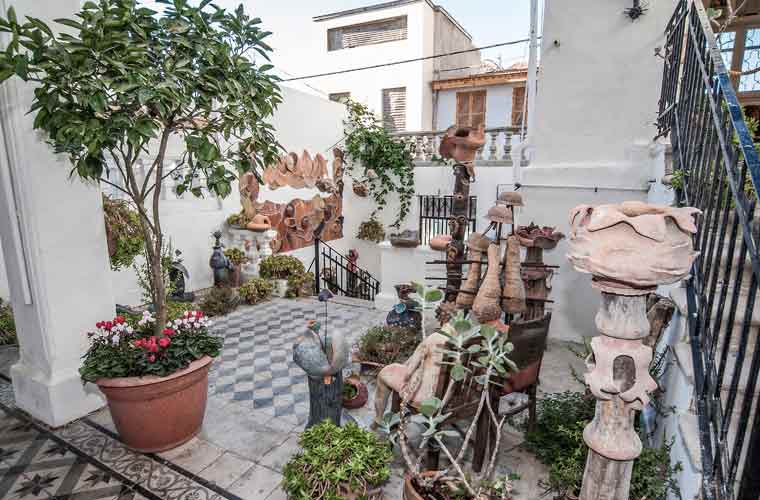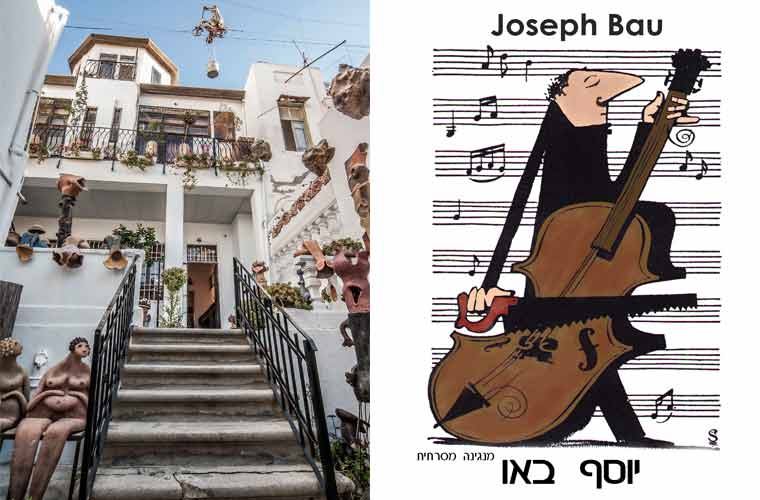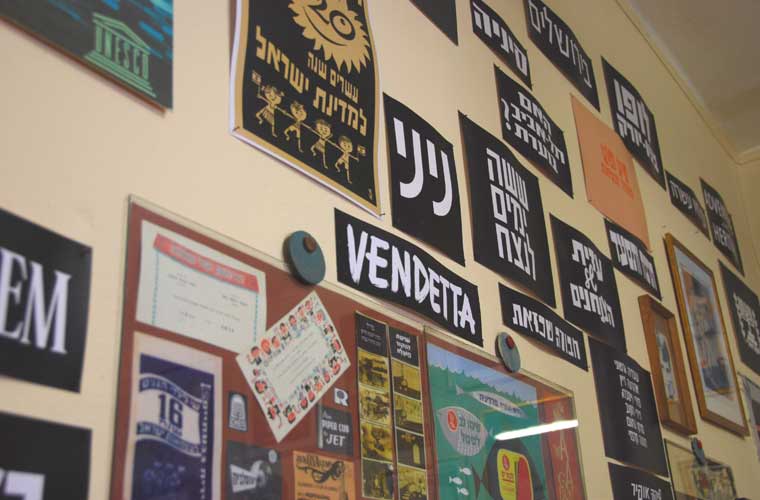History Museums in Tel Aviv
Dan Magazine 20/10/2015
Two houses in Tel Aviv that harbor historical and fascinating life stories: The Joseph Bau House, and The Rokach House.
The Rokach House – a taste of the past.
The Rokach House is located in the Neve Tzedek neighborhood of Tel Aviv. The house was built in 1887 by Shimon Rokach, the founding father of the neighborhood. The house is authentic 19th century and incorporates a dome shaped roof. It is an architectural gem and is the only one in the neighborhood that has been restored and maintained exactly as it was, giving its’ visitors the atmosphere of the early Neve Tzedek settlement.
The Rokach House serves as a museum showing the history of the neighborhood and the realization of the dream of the Jews of Jaffa to venture out past the small alleyways and out to the golden sands, in order to establish the first Hebrew neighborhood. Rokach House was the home of Shimon Rokach, the visionary, the organizer and the builder of the Neve Tzedek neighborhood. It happened in 1887. After the establishment of the Neve Tzedek neighborhood, more neighborhoods were built with houses that eventually occupied the dunes and spread out until later they finally became what today is known as the city of Tel Aviv. The house served as Rokach’s private residence and as a committee house for the people of the neighborhood and community leaders, which were headed by Shimon Rokach who took care of all the neighborhood needs.
Over the years, the house was neglected and abandoned and in a state of terrible disrepair. In 1982 Shimon Rokach’s granddaughter, sculptor Leah Majaro-Mintz, undertook to rebuild the house while keeping its original character. Leah made an effort to maintain the character and appearance of the original house and create harmony between the beautiful spaces of the building and garden. Cultural and artistic events are also hosted at the house, which add to the tranquil atmosphere that Leah has jealously kept. The Rokach House won first prize in the European Preservation of Historic Sites Competition and a Site Preservation Council Award.
The visit opens the door into a snap shot of the way of life in the late 19th century that includes items of furniture, accessories, clothing, photos and a video that takes visitors on a journey back in time to life during that era. The authentic-looking dining room with a table set with original dishes, gives the feeling that at any moment the family will gather around the table for the traditional Sabbath meal. Israel, Rokach’s youngest son, who served as Mayor of Tel Aviv after Dizengoff and held the position for 17 years, is depicted at the desk where he wrote the speech for the Declaration of Independence of the State of Israel. Family photographs and pictures of significant events on the walls include rare photographs from the period of the expulsion of the Jews of Jaffa and Tel Aviv by the Turks to distant settlements.
Another interesting way to get to know the atmosphere of the period with all cultural characteristics is to see the performance, now showing at the Rokach House. This magical theatrical experience with two actors, puppets and magnificent objects, humorously and lovingly illustrates the same lifestyle that was lived in the house over a century ago. At the performance you can also indulge in tastes from the past that include soda pop, rose tea and biscuits. Together with Ms. Hannah Rokach you will encounter a colorful way of life, get excited by a dreamy wedding, and like her, fall in love with her fiancé, a violinist who’s music touches the hearts of all.
The Joseph Bau House – a studio that became a museum
Joseph Bau’s production studio located on Berdichevsky Street in Tel Aviv has been transformed into a small and unique museum, perhaps the only one its kind. The studio combines animation, film, graphics, advertising, photography, espionage, the love of Israel and the Hebrew language, Holocaust, stories and poems, all displayed in the unique humorous manner of the creator, Joseph Bau.
Bau, a native of Kraków, Poland, studied Visual Arts at the local university. He met his wife, Rebecca, at the Płaszów concentration camp, where they secretly got married. Bau, disguised as a woman, sneaked into the women’s camp to take part in the marriage ceremony. The wedding was commemorated in Steven Spielberg’s movie “Schindler’s List”. There, in the concentration camp, he discovered his talents as an artist by ingenious use of limited resources and improvisation. To raise the prisoners’ morale he created humorous cards and a small palm-size booklet in which he wrote poems and drew pictures on paper made from cigarette stubs.
In the 50s, shortly after they immigrated to Israel, Bau established a graphics and cartoon film studio. There he created commercials, animated films and titles for most of the films made during that time in the country. He greatly contributed to the establishment of the Israeli film industry which was at the time in its infancy. His modest studio created the movie titles such as: “Kazablan”, “Sallah Shabati”, and many others.
Through Joseph Bau’s humorous drawings of the Hebrew language we discover a rich and sophisticated language where every word has a deep meaning. Through his advertising and graphic works, we are introduced to the beginning of the country’s film, press and television industry. A visit to the museum and viewing the animation films leaves visitors with a strong impression and an exposure to the values that guided Joseph during the Holocaust. These factors led him to be the founder of the basics of animation and graphics in the country. At the museum is a display of the original animation equipment he built from an assortment of parts he found in the flea market and the tiny cinema he built with his own hands.
The enduring spirits of the museum are Joseph’s daughters, Hadassah and Clila. The way they tell Joseph’s moving and fascinating life story draws visitors into Joseph’s hopes, optimism and diverse talents.
His special life’s work gained international recognition and his artwork is exhibited around the world, in addition, the books he wrote have been translated into many languages. Many of his books and articles are about Holocaust survival and describe the story of Joseph Bau, as an artist and as a man who stood out in particular due to his sense of humor, love and optimism in seeing the bright side of any situation, a way of life reflected in his works.
Joseph Bau House, 9 Berdichevsky St., Tel Aviv
www.josephbau.org
The Rokach House, 36 Shimon Rokach St.,
Neve Tzedek, Tel Aviv
www.rokach-house.co.il




